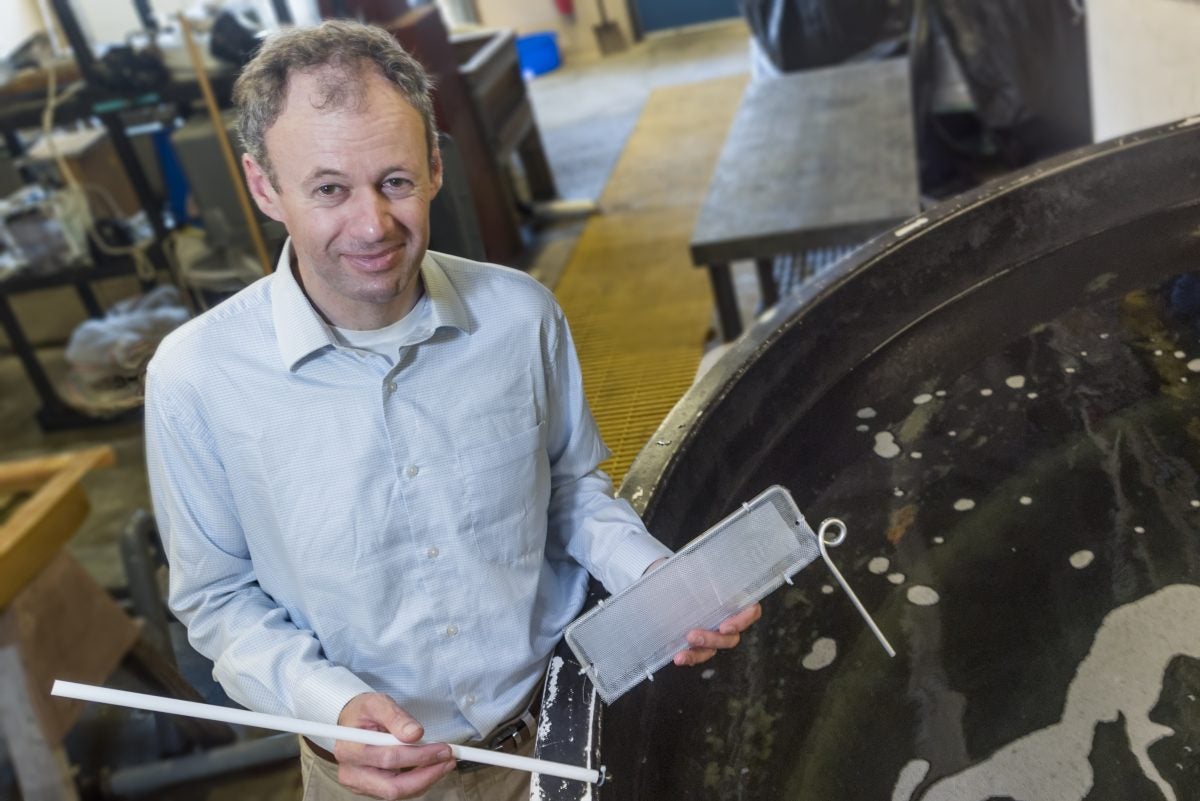Nonstick cookware and firefighting foam are miles apart in their purpose, but they have one thing in common. Both are made with chemicals that could be contaminating drinking water and posing a human health hazard.

Photo by: Michael Salerno
Now, URI is at the forefront of research committed to revealing more about the pollutants. The University has received a five-year, $8 million grant from the National Institute of Environmental Health Sciences to study how these industrial compounds, also used in rain-proofing fabrics and food packaging, get into water supplies and harm humans, who are likely to come in contact with the chemicals daily. Fluorinated pollutants, or poly- and perfluorinated alkyl substances, have been used for more than 60 years in a variety of items; still, studies of the chemicals are limited and conflicted.
The grant establishes URI as part of a national network of Superfund Research Program centers with Rainer Lohmann, a professor at the Graduate School of Oceanography and an expert in marine pollutants, as director. He will lead an interdisciplinary group of scientists and outreach specialists from URI, Harvard University and Silent Spring Institute to generate new insights into these pollutants and distribute information to communities.
The project aims to understand how the chemicals contaminate the groundwater, the food chain and, ultimately, humans.
Researchers will examine to what degree groundwater in towns near the Joint Base Cape Cod, Mass., military training site is contaminated with the chemicals, which were present in firefighting foam used during training exercises and have been linked to kidney and testicular cancers, thyroid disease, colitis and suppression of the immune system. Residents will be informed of the findings and, if necessary, steps will be taken to reduce exposure to the pollutants.
Lohmann said that the new URI-led center will “work closely with communities and scientists to share our knowledge and help inform people and agencies about this growing problem. These fluorinated contaminants are present in the blood of almost every adult in the United States.”
Sources of the chemicals include landfills, manufacturers, users and airports and fire-training sites. The chemicals, also known as PFASs, are persistent because they don’t break down when exposed to air, water or sunlight and can travel long distances.
Working with Lohmann is an interdisciplinary URI team: Geoffrey Bothun, professor of chemical engineering; Alyson McCann, water quality coordinator of URI Cooperative Extension; Angela Slitt, associate professor, and Bongsup Cho, professor, of biomedical and pharmaceutical sciences; and Judith Swift, professor of communication studies and director of the Coastal Institute, along with the Institute’s assistant director Nicole Rohr and digital media specialist Amber Neville.
Lohmann says the project is a great example of URI professors and staff working together: “I’m very proud that the center will train young scholars at URI and Harvard to make the world a healthier place.”
